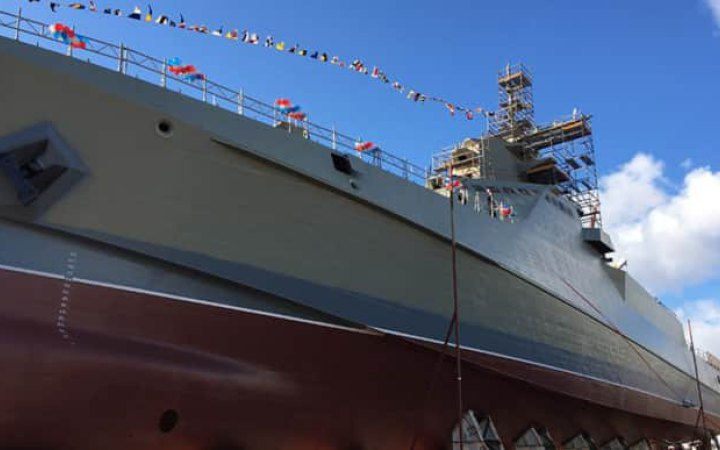The Defence Intelligence of Ukraine has confirmed the destruction of the Russian patrol boat Sergey Kotov. The vessel has been sunk.
On the night of 4-5 March, a special unit of the Defence Intelligence of Ukraine, Group 13, attacked the Russian Black Sea Fleet patrol boat Sergey Kotov. The mission was conducted jointly with the Ukrainian Navy and with the support of the Ministry of Digital Transformation of Ukraine.
"As a result of the strike by Magura V5 maritime drones, the Russian ship Project 22160 Sergey Kotov sustained damage to the stern, starboard and port sides," the statement said.
The fire damage to the Kotov occurred in the territorial waters of Ukraine, near the Kerch Strait. The cost of the sunken ship is about $65 million.

On 25 July, the Kotov was already attacked, but it was not sunk. It was also attacked in September, by DIU specialists using Magura naval drones.
Explosions were heard in Crimea last night. The Russian Ministry of Defence, as usual, claimed that the attack was successfully repelled. However, eyewitnesses on social media did not confirm that, and even military bloggers wrote about the defeat of the Kotov ship. Traffic on the Kerch Bridge was blocked.
Magura V: what are these drones?
Magura V5 is a development for the Defence Intelligence of Ukraine. It is equipped with two cameras, infrared optics, and a satellite module that transmits camera signals to the control centre.
The engine can reach a speed of 45 nautical miles per hour. A cruising speed of 25 miles per hour provides a range of 250 miles. The warhead is located in the nose and weighs 250 kilograms. The warhead in the next generation of drones is even heavier. The new modification of the maritime drone also allows it to lay mines in the path of enemy ships and return to its home port. The United Kingdom and the United States played a significant role in creating the Ukrainian fleet of attack drones. This cooperation resulted in significant losses of the terrorist Russian fleet and the ousting of the aggressor from the western part of the Black Sea.








